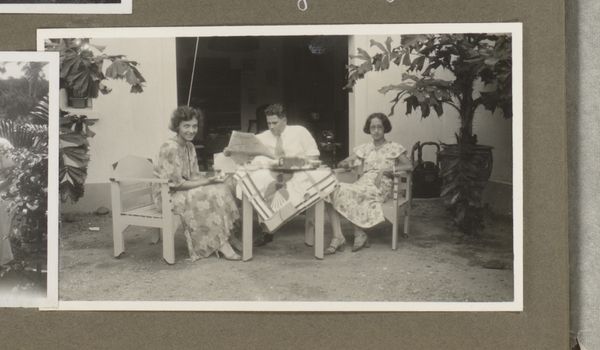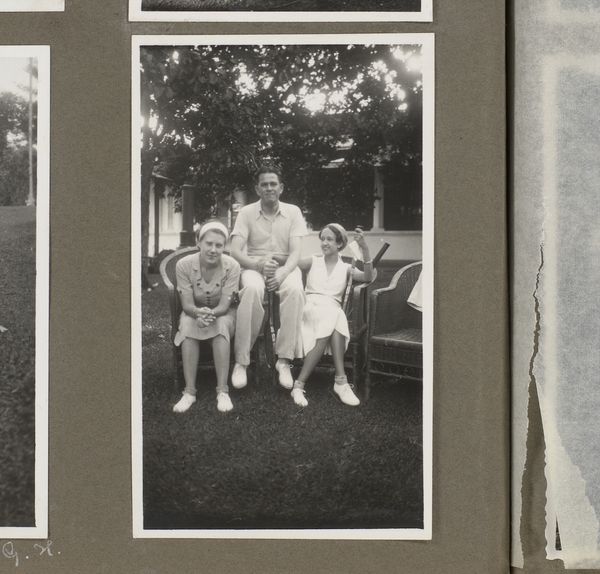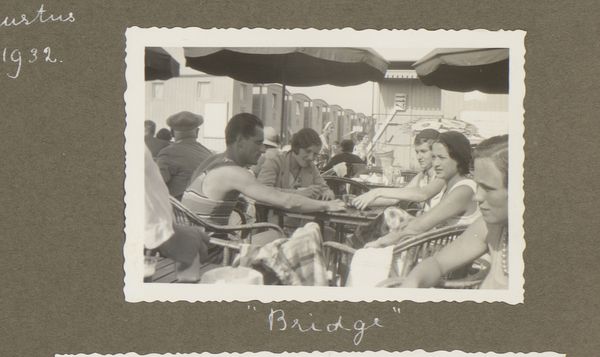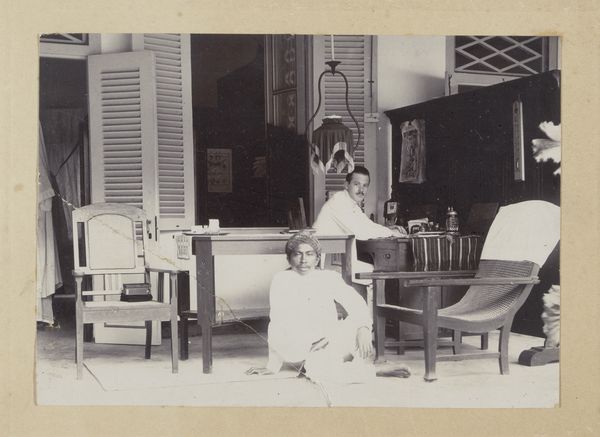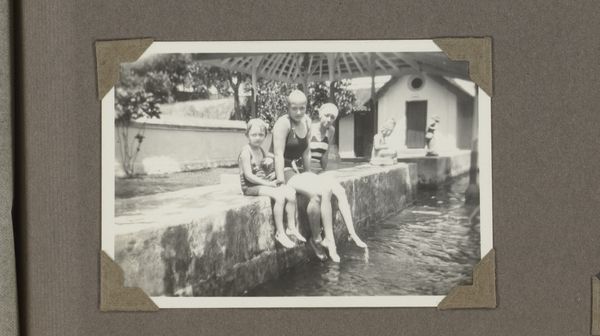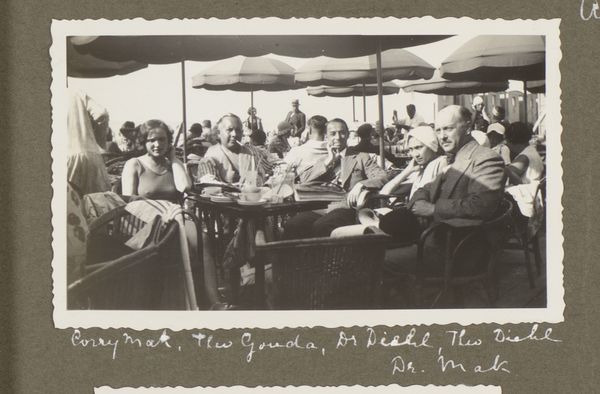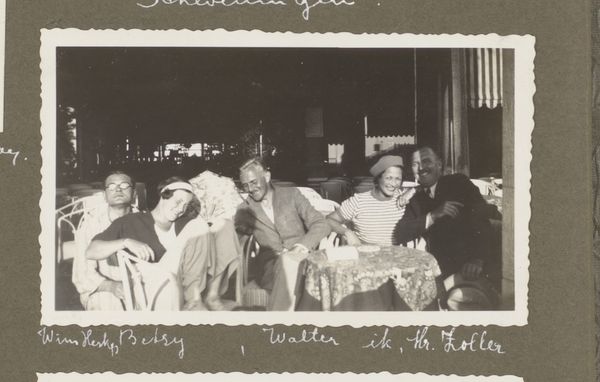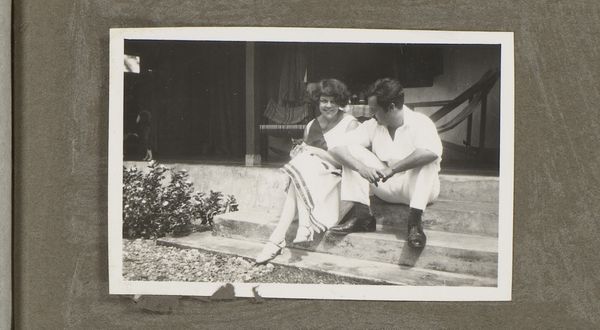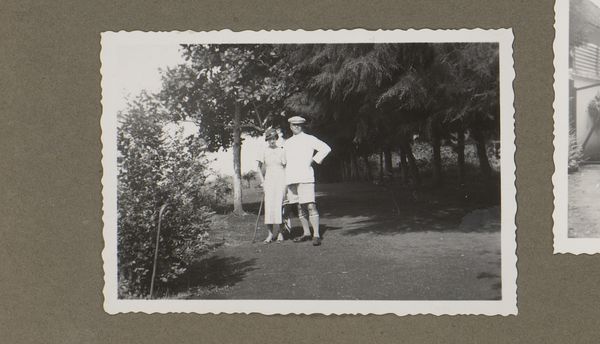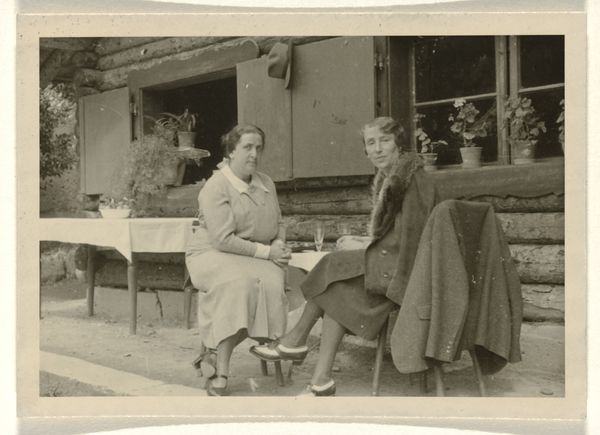
#
photo of handprinted image
#
aged paper
#
reduced colour palette
#
photo restoration
#
ink paper printed
#
recolouration
#
archive photography
#
personal sketchbook
#
desaturated colour
#
old-timey
Dimensions: height 60 mm, width 86 mm
Copyright: Rijks Museum: Open Domain
Curator: Welcome. Today, we're looking at "Ada Krüseman on a veranda, Tjibeber," an interesting photographic print dating back to 1932. Editor: There’s a languid feeling, isn't there? All muted tones and wicker chairs. I immediately feel like I’m in a Somerset Maugham story. What strikes you first? Curator: It's the composition, the way the light falls and emphasizes the seated figures in such a staged fashion. They look contemplative. The composition almost adheres to a kind of colonialist-era tableau vivant style. Editor: Tableau vivant—good phrase! Staged, yes, but look closer. There's something deeply human trying to peek through this performance of civility. Notice the slightly unfocused gazes of the individuals and the arrangement itself... there's an accidental casualness that feels, to me, more about fleeting reality than it does of permanence. It brings warmth to an otherwise structured scene. Curator: Absolutely. You read a personal narrative within its form. And it’s important to acknowledge that "Ada Krüseman on a veranda, Tjibeber" exists now within a context of "aged paper," "reduced colour palette," and even "photo restoration" adding further depth. Does the surface inform your understanding? Editor: Immeasurably. The degradation of its color, that almost dreamlike desaturation, is like memory itself fading, allowing for both heightened beauty and, indeed, deeper interpretations of what truly remains—that humanity we spoke of. I almost think it is now beyond photography...it has become a memory. Curator: An emotional archaeology then. To engage with its eroded elements is to encounter both its original intent, whatever that may be, as well as its legacy as a historical artifact. Editor: Exactly! That friction—that push-and-pull between then and now—becomes the poem, or the heart of the piece. Curator: Well, on that beautiful note, I think we have reached the end of our visit. Editor: Thank you, and don't forget, art often lies not in perfection, but in the eloquent imperfection.
Comments
No comments
Be the first to comment and join the conversation on the ultimate creative platform.
